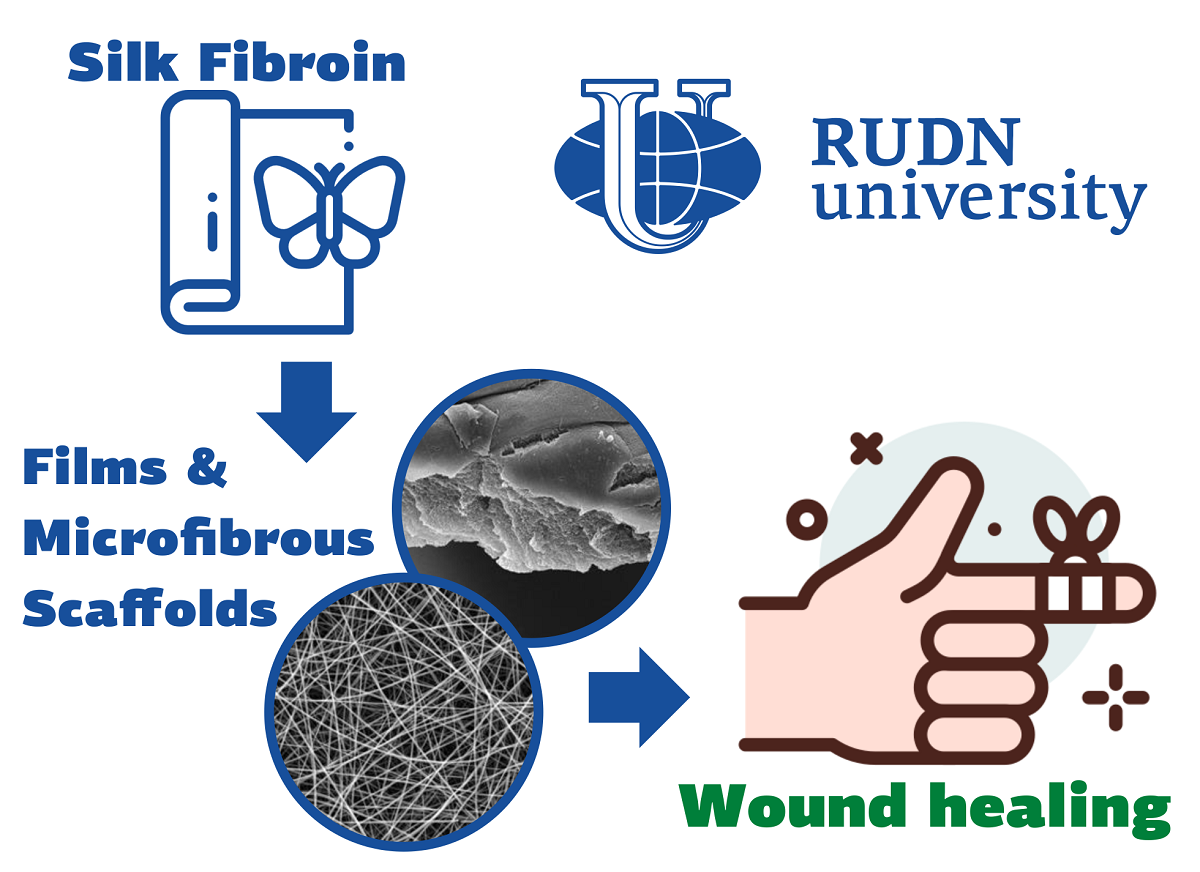RUDN doctors have shown that "silk" protein can heal wounds 1.5 times faster
Tissue engineering is the creation of artificial tissues and organs forimplantation. One of its main directions is biocompatible materials. Collagen, elastin, hyaluronic acid and other substances are usually usedto create such materials. However, they have a disadvantage ofki — for example, poorsolubilityorinsufficientstrength. Solvingandt thisand problemscan be with the help of shyolka, which produces silkworm Bombyx mori, namely with the help of the protein fibroin. Doctors from RUDN University and the Federal Scientific Centerfor Transplantology and Artificial Organs of the Russian Federation investigated several materials from fibers oina and proved their prospects for tissue engineering.
“Silk fibroin has a unique combination ofproperties. It can be used in many areas of tissue engineering, both alone and in composite materials. Wecompared silk fiber-based films and microfiber scaffolds, their biological properties and regenerative potential, and also obtained new data on the surface and internal structure, ”- Alexey Lundup,Candidate of Medical Sciences, Director of the Scientific and Educational Resource Centerand Cell Technologies of RUDN University.
Doctors compared three fibroin structures — thin films that are obtained from an aqueous solution of fibroin and two types of scaffolds of fibroin microfibers (with the addition of gelatin and without it).The internal structure of both films and fibers is similar — they consist of tightly packed protein “tangles”. Doctors calculated the parameters of the structures — surface area, volume, porosity.
The biological properties of the structures of doctors studied in an experiment with rats. 20 rats were divided into 4 groups. All animals suffered an injury (cut) of the skin. On the wounds of animals from three groups, one of three types of fibroin materials was applied, the fourth group became a control. Doctors measured the width of the wound 7 times over 40 days.
Fibroin materials accelerated healing by about 1.6 times — 15 days earlier compared to the control group. Moreover, the structure of the healed skin did not differ from the “native” — this indicates a high regenerative potential of structures based on fibroin. From 3 to 21 days of healing, fibroid scaffolds accelerated wound healing more than films. Doctors suggestedthat the reason isthat that in the initial stages of healing, the structure of microfibers allows cells to move more actively into the wound and build new tissue.
“The designs are safe for cells and maintain high levels of cell adhesion and division. Films and microfiber scaffolds proved suitable for surgical manipulations in the experiment with the healing of full-layer skin wounds. Thus, films and microfiber scaffolds are promising for further use in tissue engineering and regenerative medicine, ”- Candidate of Medical Sciences Alexey Lundup,Director of the Scientific and Educational Resources Centera “Cell Technologies” RUDN University.
The results are published in the journal Pharmaceutics.
Products derived from microalgae represent a cutting-edge development in the field of bioeconomy. The potential of this biological resource was discussed at the international research seminar “Foundations for a Green Sustainable Energy”, part of the BRICS Network University’s thematic group on “Energy”. The event was organized by the Institute of Ecology at RUDN University.
Ambassadors of Russian education and science met at a conference in RUDN University to discuss how they can increase the visibility of Russian universities and research organizations in the world, and attract more international students in Russia.
The international scientific seminar hosted by RUDN Institute of Ecology “Experience of participation in student organizations as a way to form career skills” united scholarship recipients of the International Student Mobility Awards 2024 and Open Doors, along with members of the scientific student society “GreenLab” and the professional student association “Kostyor (Bonfire)” shared their projects focused on environmental protection.
